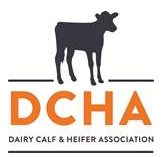

The first official day of winter is December 21, although in many parts of the country winter weather has already arrived. If you haven't reviewed your winter milk feeding protocols yet, now is a great time to do so.
"When the temperature drops below 55 degrees F, calves will require extra energy for maintenance," says Tamilee Nennich, Purdue extension dairy specialist. "The lower the temperature falls the more energy will be needed by calves just to maintain themselves and to stay warm."
For example, at about 20 degrees F, young calves will need about 1.5 times as much energy for maintenance. At -20 degrees F, calves will need twice as much energy for maintenance compared to when it is above 60 degrees F, Nennich says.
Because of this increased demand for energy, it's important to feed calves additional energy to maintain growth rates during cold weather. Here are some feeding strategies for increasing the amount of energy fed to calves:
- Feed more overall volume of milk or milk replacer.
- Feed extra milk replacer powder in the same amount of water.
- Feed a milk replacer with a greater fat composition.
- Add a fat supplement to the milk replacer.
Whether you use a single feeding strategy or a combination, make sure to provide fresh water. "Even though it's cold, calves still need a source of fresh water each day," Nennich says. Make sure calves always have access to calf starter as well.
12.18.2013